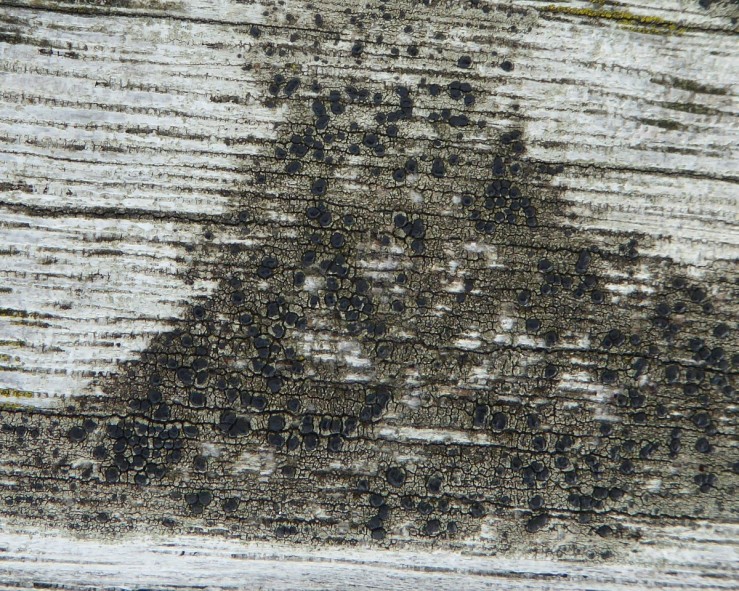Exploring the Dunes at the North end of Blyth bay highlit the hazards the dunes face. Threats such as ‘blowouts’ are frequent, where strong winds can break the dunes spreading sand over the vegetation. Groynes have been built to encourage sand deposition, Marram grass planting encourages dune growth by trapping and stabilising blown sand.
Transplanting Marram grass (Ammophila arenaria) and Lyme grass to the face of eroded dunes enhances the natural development of yellow dunes above the limit of wave attack. These natural dune grasses act to reduce wind speeds across the surface, thereby trapping and holding sand. They grow both vertically and horizontally as the sand accumulates. Marram grass is particularly effective as it positively thrives on growing dunes, and is perhaps the easiest to transplant.
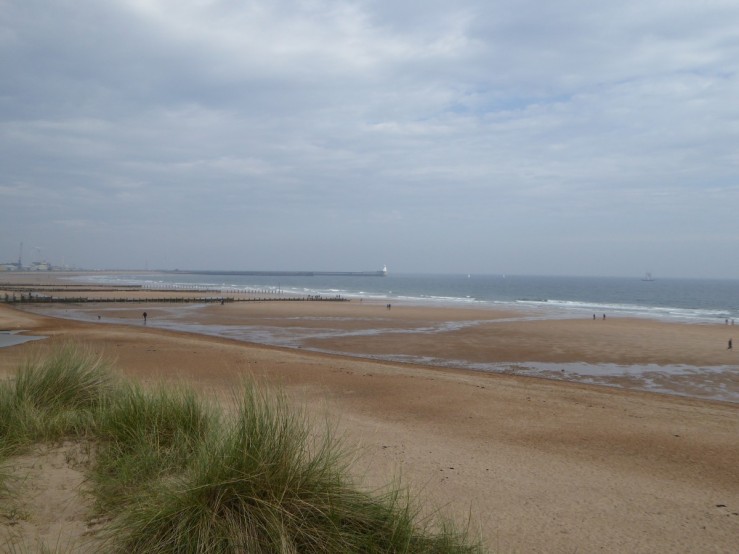
Other measures taken include brashing with old Xmas trees, use of coir matting as a stabilizer, sand replenishment and fencing. It was a fine day on the 24 Sept; there were many plants still flowering. Bloody Cranesbill was carpeting the slacks behind the dunes. Burnet Rose (Rosa pimpinellifolia) was ubiquitous, its black hips gleaming.
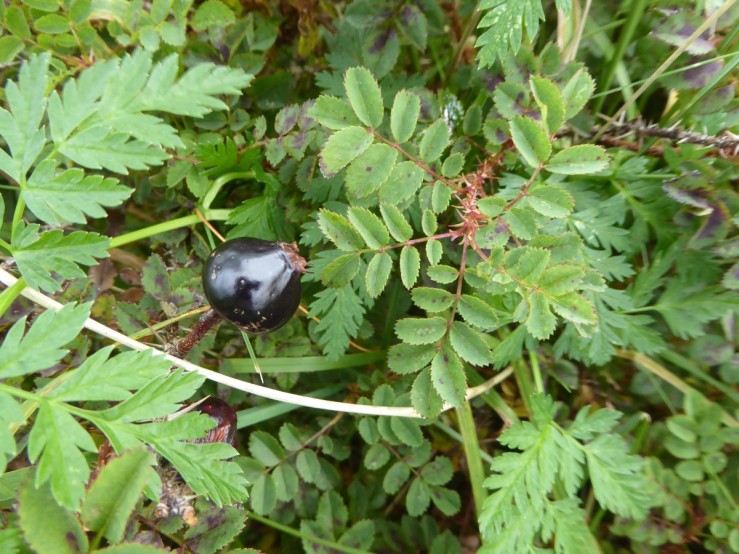 Dewberry (Rubus caesius), still flowering and fruiting amid the Burnet rose.
Dewberry (Rubus caesius), still flowering and fruiting amid the Burnet rose.
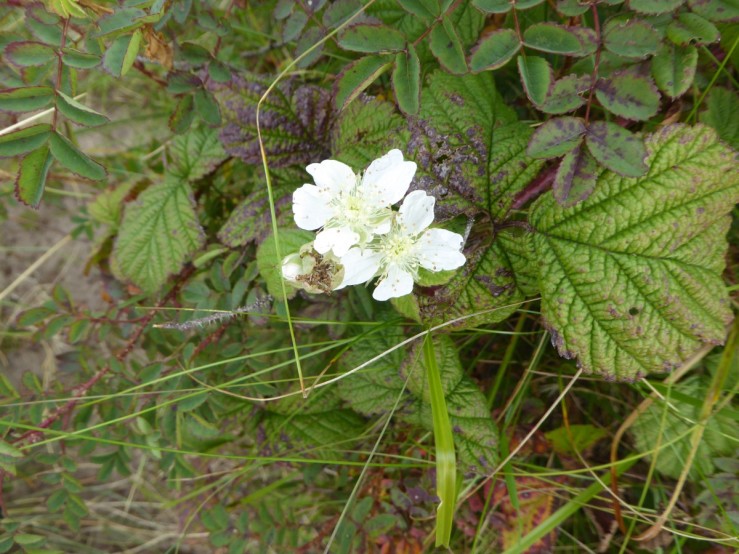
I found this soft Downy Rose (Rosa mollis) with red prickly hips.
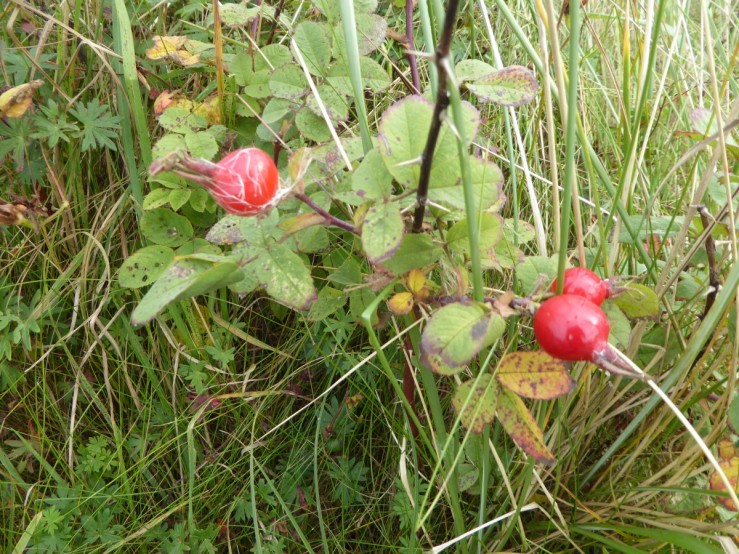
Harebell (Campanula rotundifolia) quivering delicately through the cranesbill and wiry grasses.
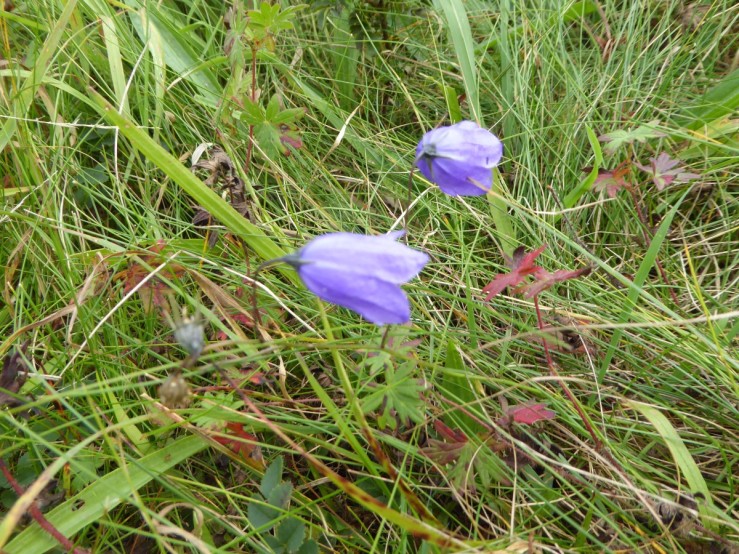
Storksbill (Erodium cicutarium) both pink and white forms scrambled over the groundin rabbit grazed turf.
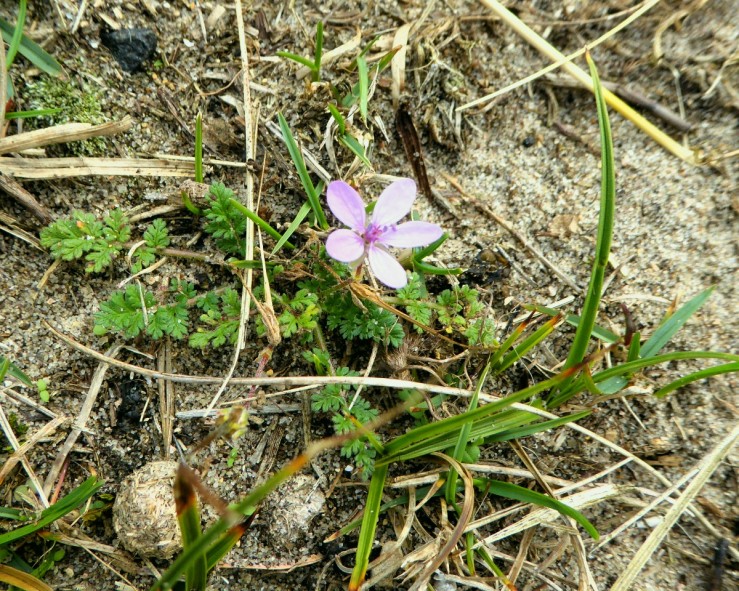
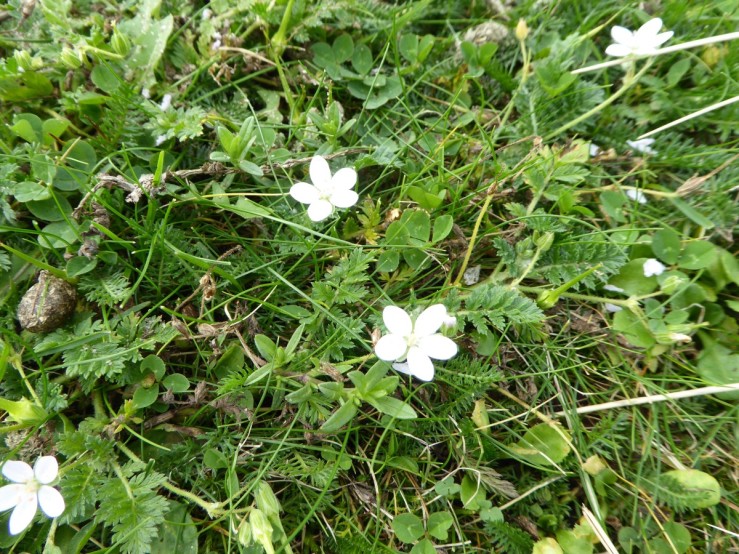
Below is Hemlock (Conium maculatum) with a very dark stem.
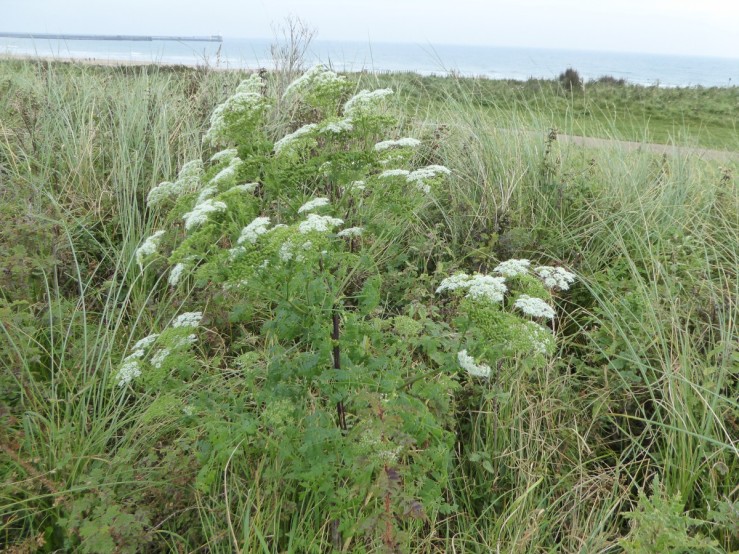
Ox Eye Daisies (Leucanthemum vulgare) seem to like the dunes, although they could be garden escapes.
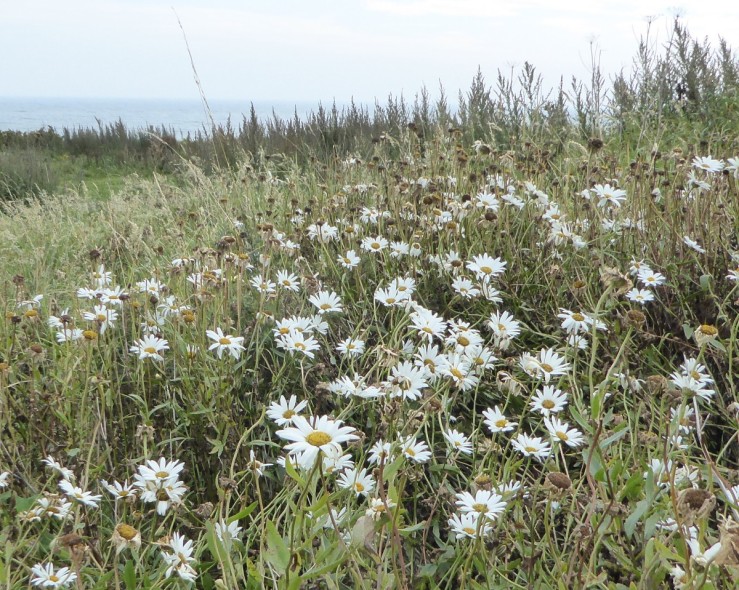
Tansy (Tanacetum vulgare) seemed to mark the change from flower rich to greyer flower poor dunes.
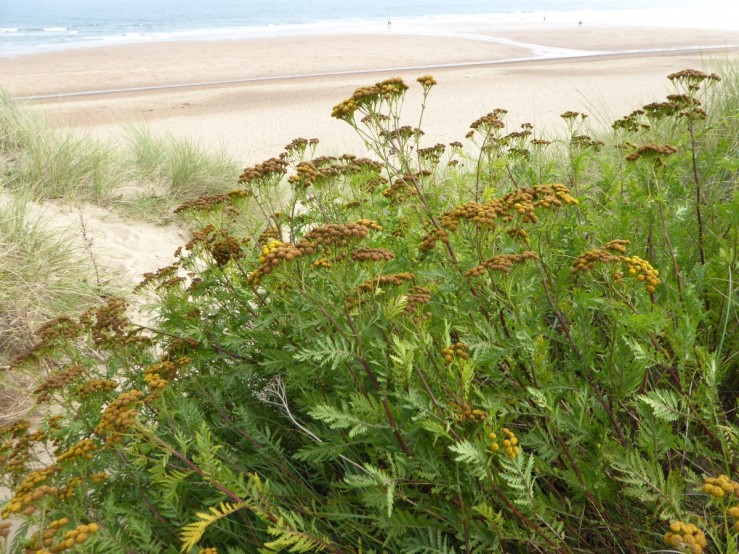
Other plants : Horse Radish, Creeping thistle, Yarrow, Ladies bedstraw, Birdsfoot trefoil, Rest Harrow, Dovesfoot Geranium, Bittersweet, Sand Sedge, Catsear.
Birds are difficult to get close to although Meadow Pipits were still calling and singing. This one was high on a hawthorn bush.
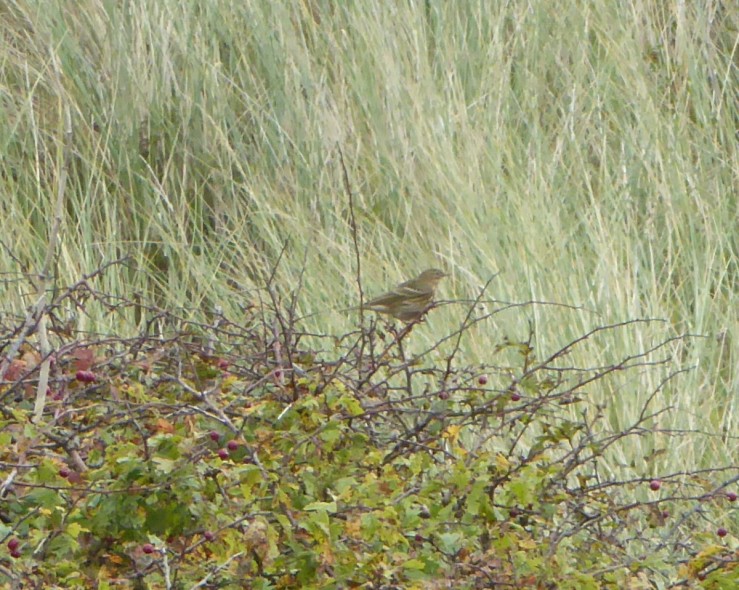
In a stubble field across the road Lapwing were feeding. They arose in glorious flight along with a flock of starling. The sky came alive with birds.
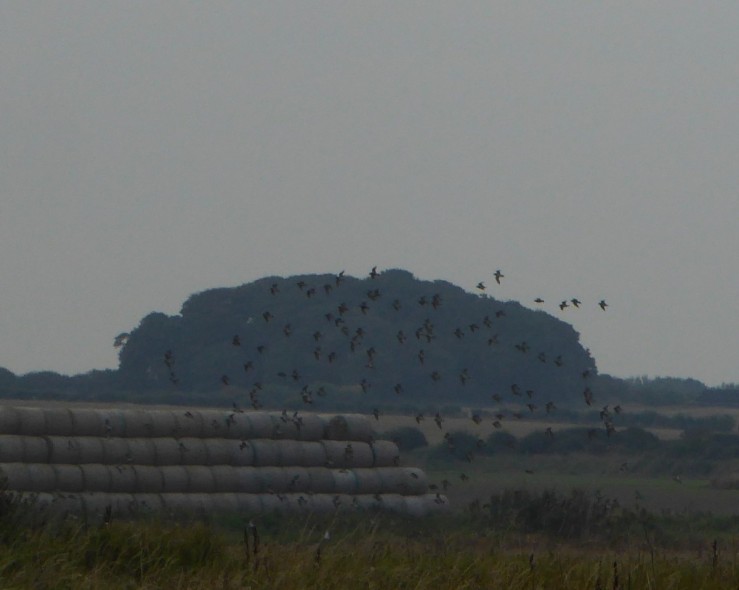
This Jackdaw was happy to be photographed showing off his magnificent black plumage.
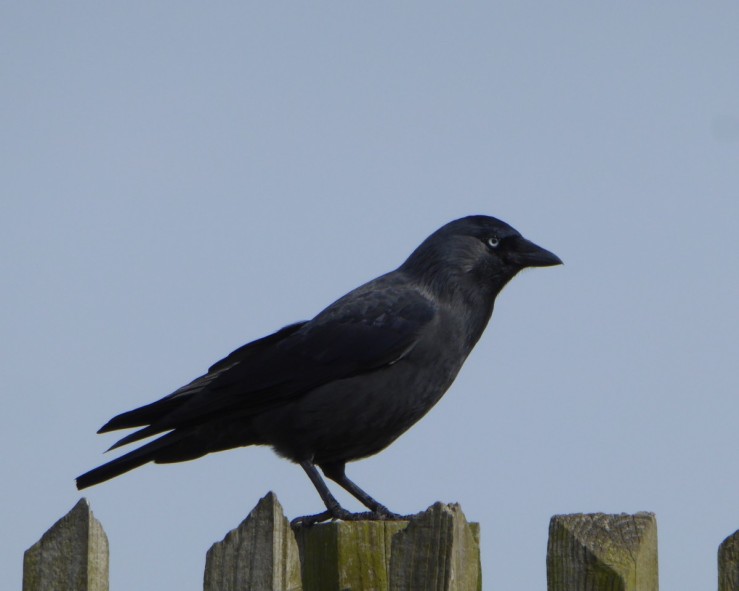
Fungi was starting to fruit, Shaggy Inkcap (Coprinus comatus) pushing through he grass.
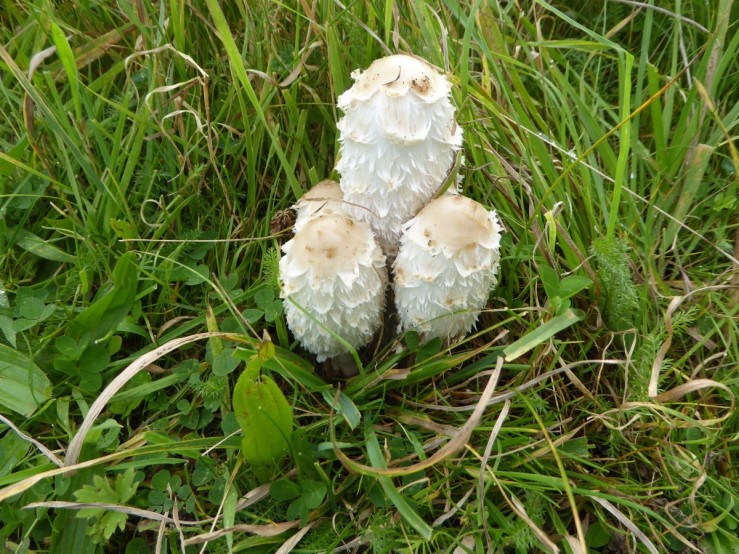
Could this be Marasmius oreades Fairy ring Champignon? I am not sure.
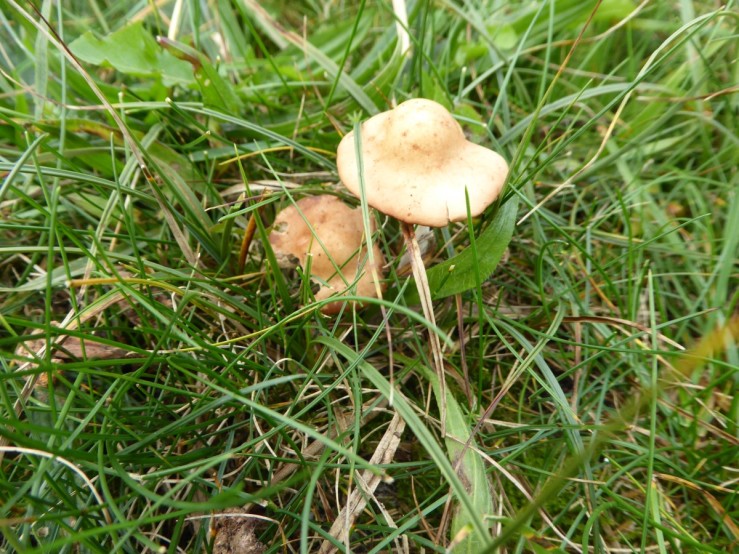
Meanwhile on the beach, the tide was very low exposing the rocks covered in Enteromorpha flexuosa, a bright green alga.
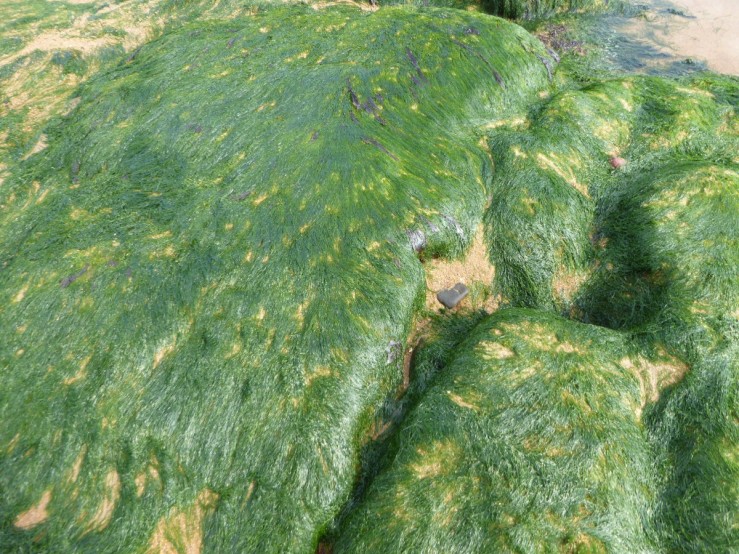
The bobbing heads of Kelp (Laminaria ssp), moving with the swell off Collywell Bay.
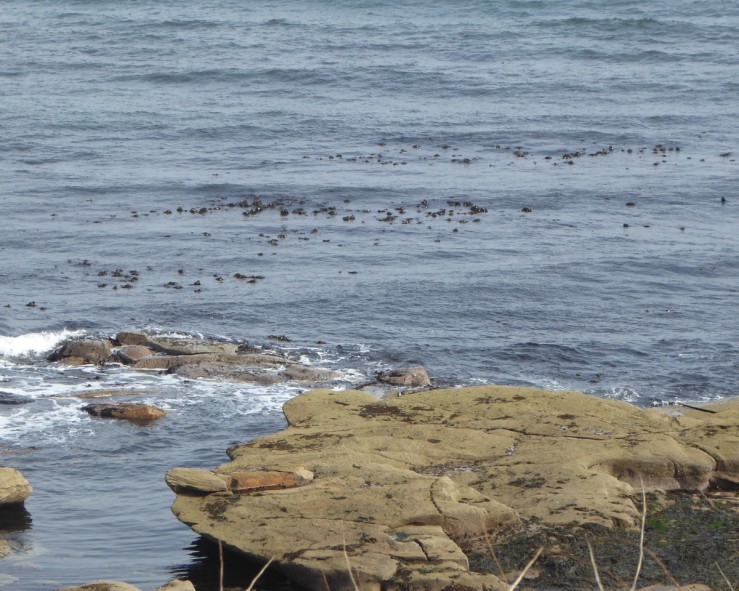
The wooden bench at the Bus Stop had a display of lichen. Caloplaca flavocitrina (yellow spots) with Lecanora symmicta.
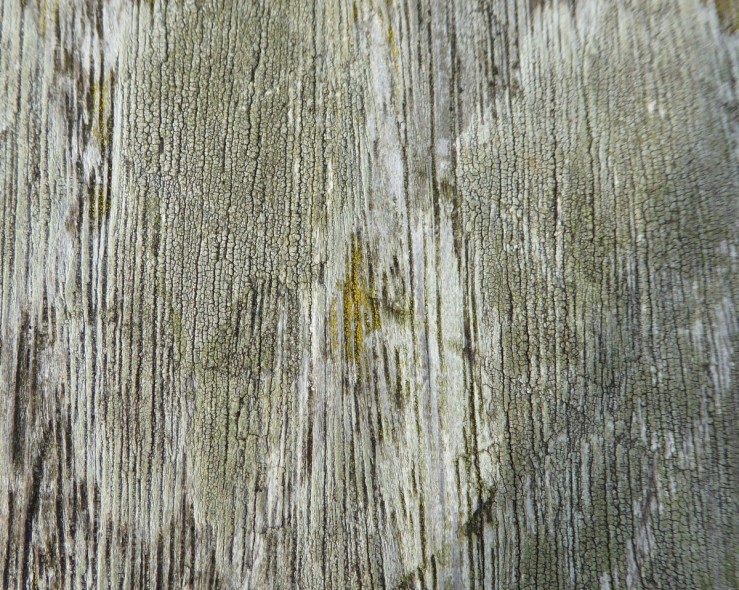
Lecidella elaeochroma? found a place on the same bench.
